Holding Records
Does Alma support holdings records which are compatible with current MARC standards?
Alma supports the management of holdings records stored in the MFHD standard. This allows any MARC field and subfield to be used in the holding records.
Can multiple holdings locations and sub- locations be defined?
The holding record provides the link between the bibliographic record and the physical inventory (items), as can be seen in the following diagram.
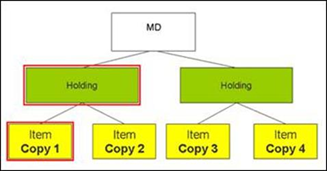
This record structure allows Alma to manage each level of the hierarchy, while maintaining linkages among the other level(s). From the staff user’s perspective, this means that a search of the repository may be conducted on any level, and each level may be edited independently. The physical resource relationships comprise:
- A bibliographic metadata record (MD) is independent of any holdings or items and may exist in the system without such.
- Holdings records must be linked to a bibliographic record (MMS id), however, they do not require any item records.
- Item records must be attached to holdings records.
- A single MD record may have multiple holdings records linked to it.
- A single holdings record may have multiple item records attached to it.
What functionality is available related to MARC21 holding records?
The Metadata (MD) Editor has been designed to facilitate streamlined cataloging of holdings metadata. Staff can edit a bib record in and view related holding and items information on the same screen:
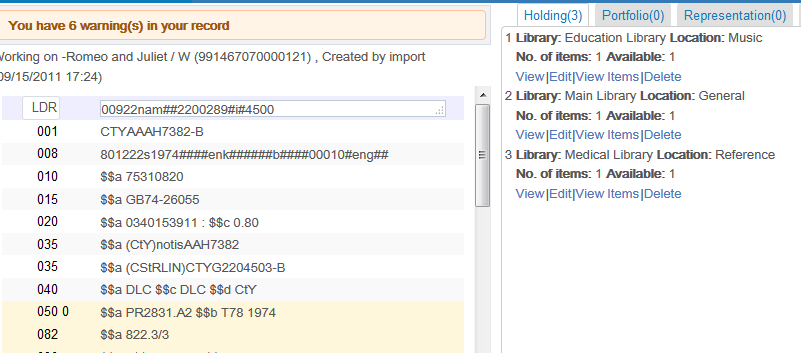
The following shows a holdings record being edited in the metadata editor, where the 852 field is being edited using a structured form, but could also be edited inline.

Does Alma support the automatic generation of 86X fields?
Alma supports the automatic creation of 866/867/868 fields summary holding information from the 853/854/855 and 863/864/865 linked fields.
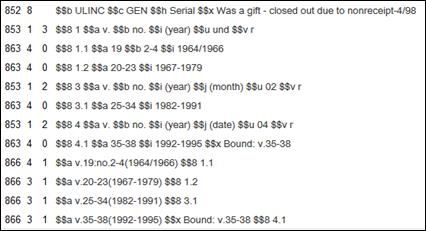
The 866 fields created will generate a summary display of information in the repository search:
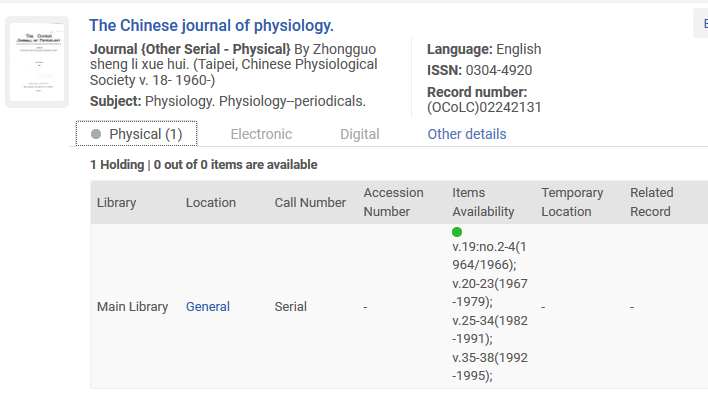
This will also display to the end user in Primo:
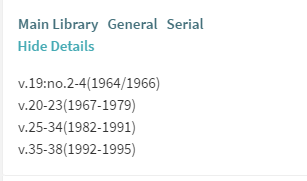
Can a holding record be relinked from one entity to another?
Alma allows libraries to relink holdings to different bibliographic records. This function can be seen in the following screen capture:
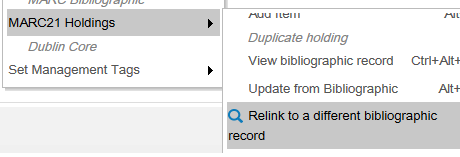
How can duplicate class marks be detected?
The library can set up the system to alert on duplicate classmarks and this can be done per combination of library and location. Specifically, it is done by setting up accession numbers in the classmarks.
When there is a duplicate classmark the system will alert the user as follows:

Can library holdings be published to OCLC?
See also: Publishing to OCLC.
Synchronizing data with between the Alma and external service providers is built to happen automatically and seamlessly, with a minimum of staff management necessary. Synchronizing holdings and records occurs for resources of all types, including print, digital, and activated packages of electronic resources.
For WorldCat specifically, individual libraries will define in Alma holdings synchronization service that will run automatically. The service will identify every record that is new, altered, or deleted since the last WorldCat synchronization. Any given resource can be suppressed if the library does not wish to share it; in this case it will not be exported for synchronization or holdings update. All affected records will be exported from Alma with updated information (or a holdings delete notification, as appropriate).
Alma supports two types of publishing profiles to OCLC:
- Publish bibliographic records (DataSync) to OCLC (includes bibliographic records and holdings)
- Publish your local holdings records (LHRs) to OCLC (includes holdings records only)

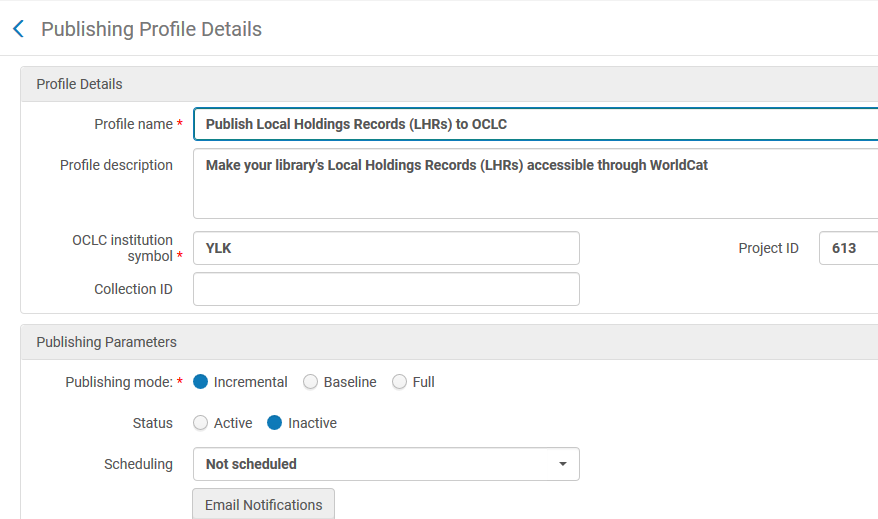
Total views:
11402
